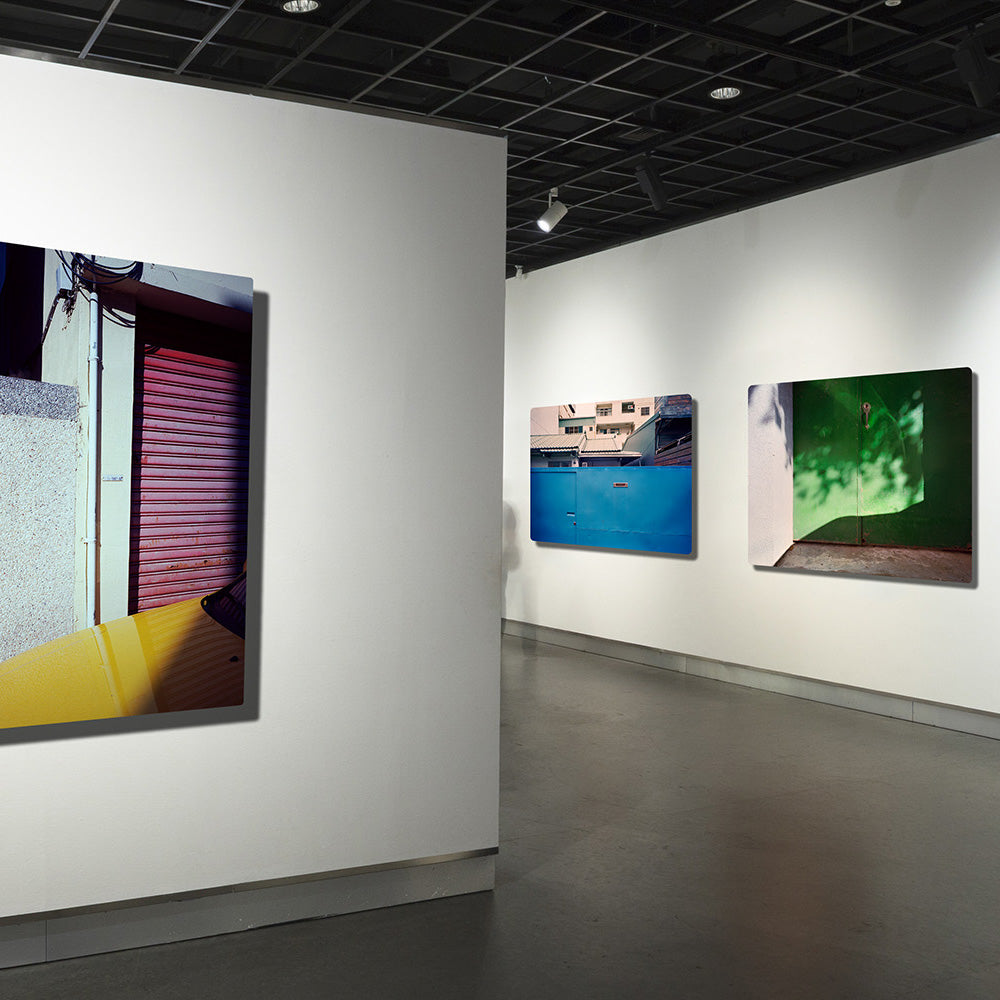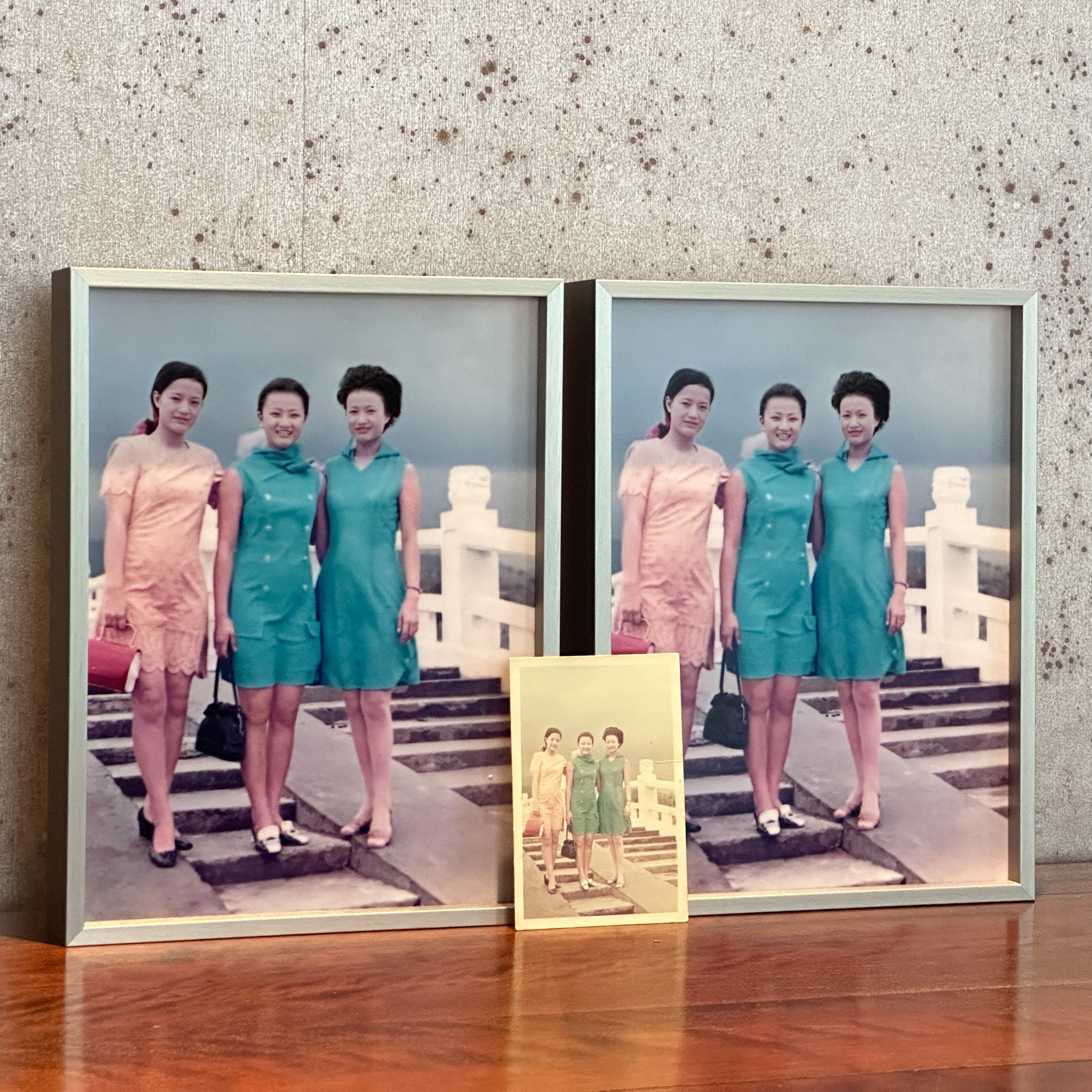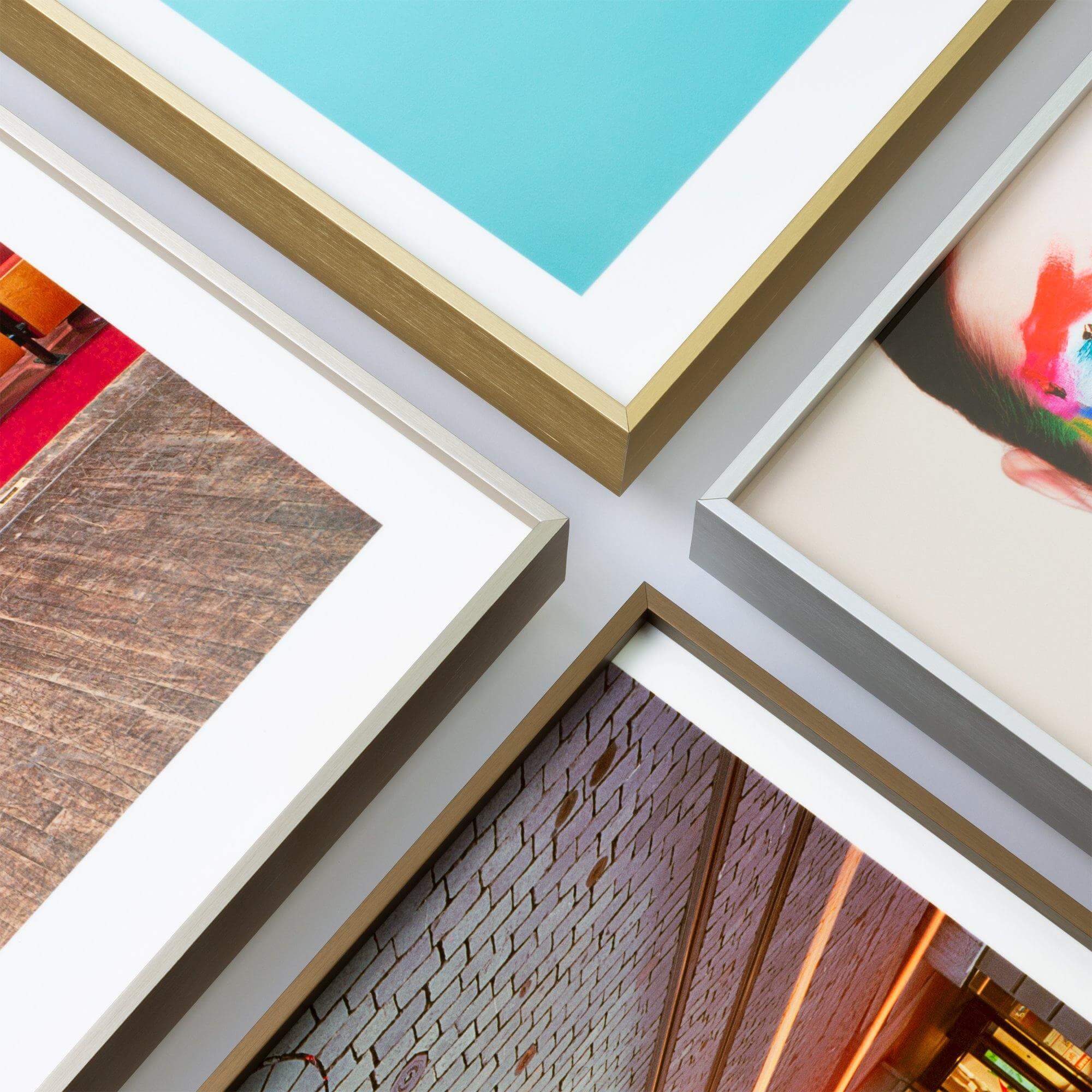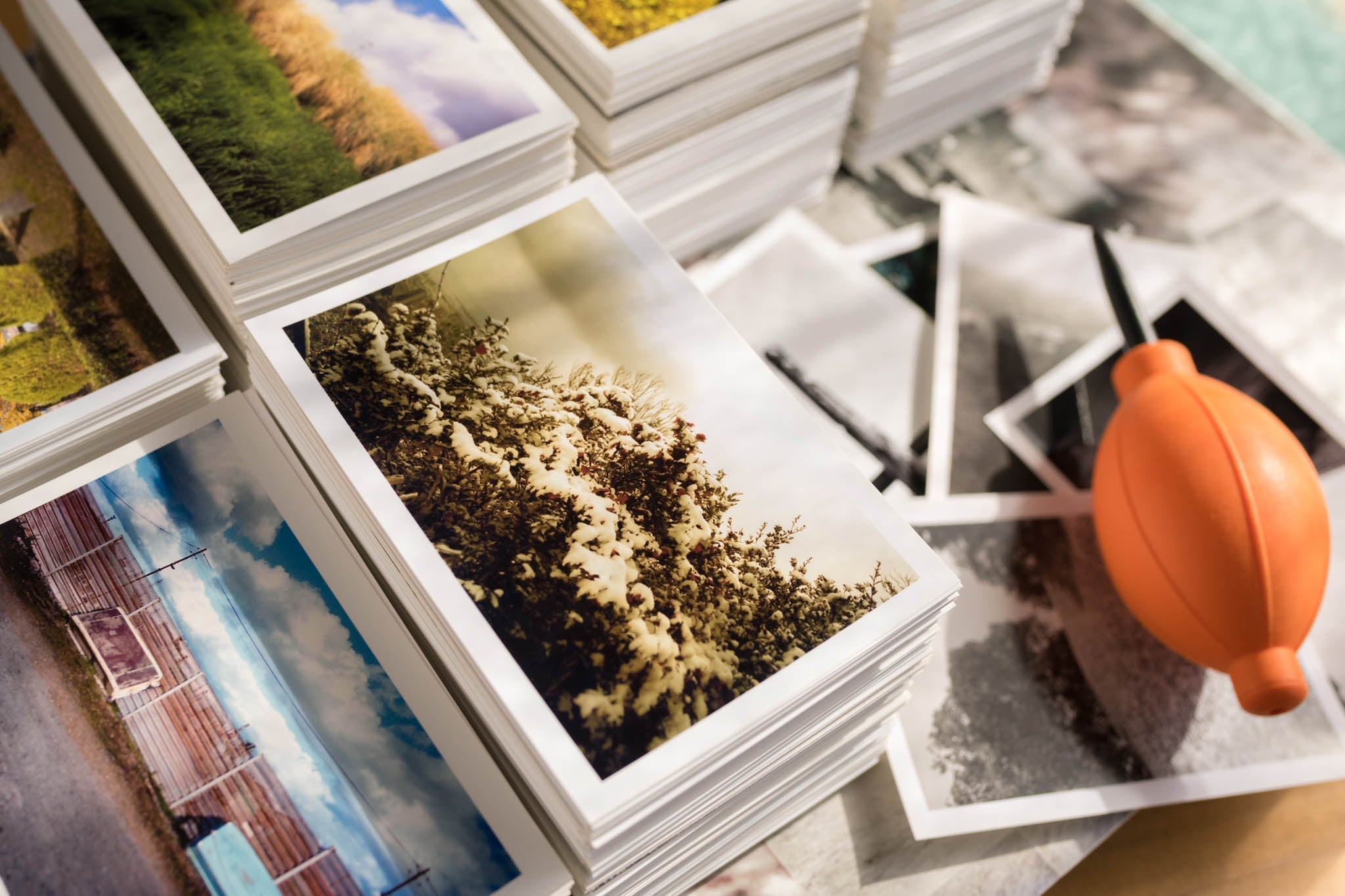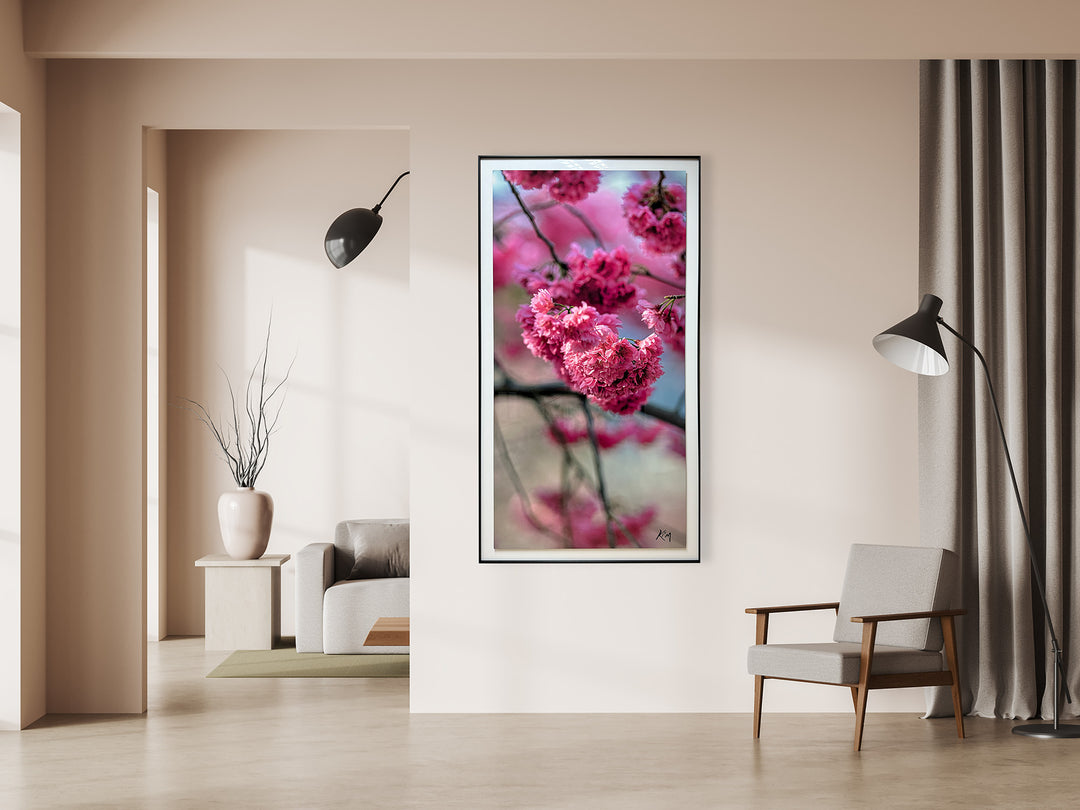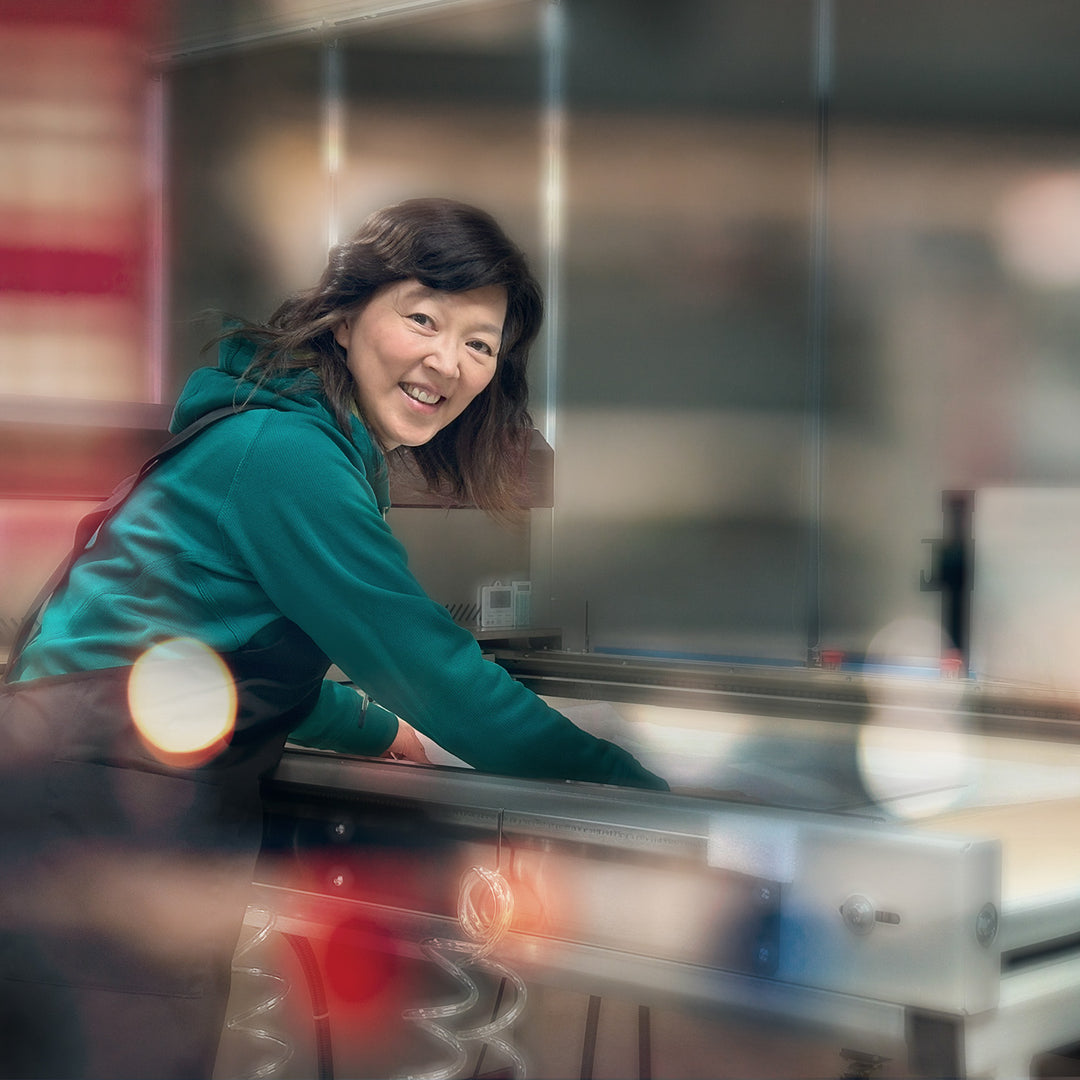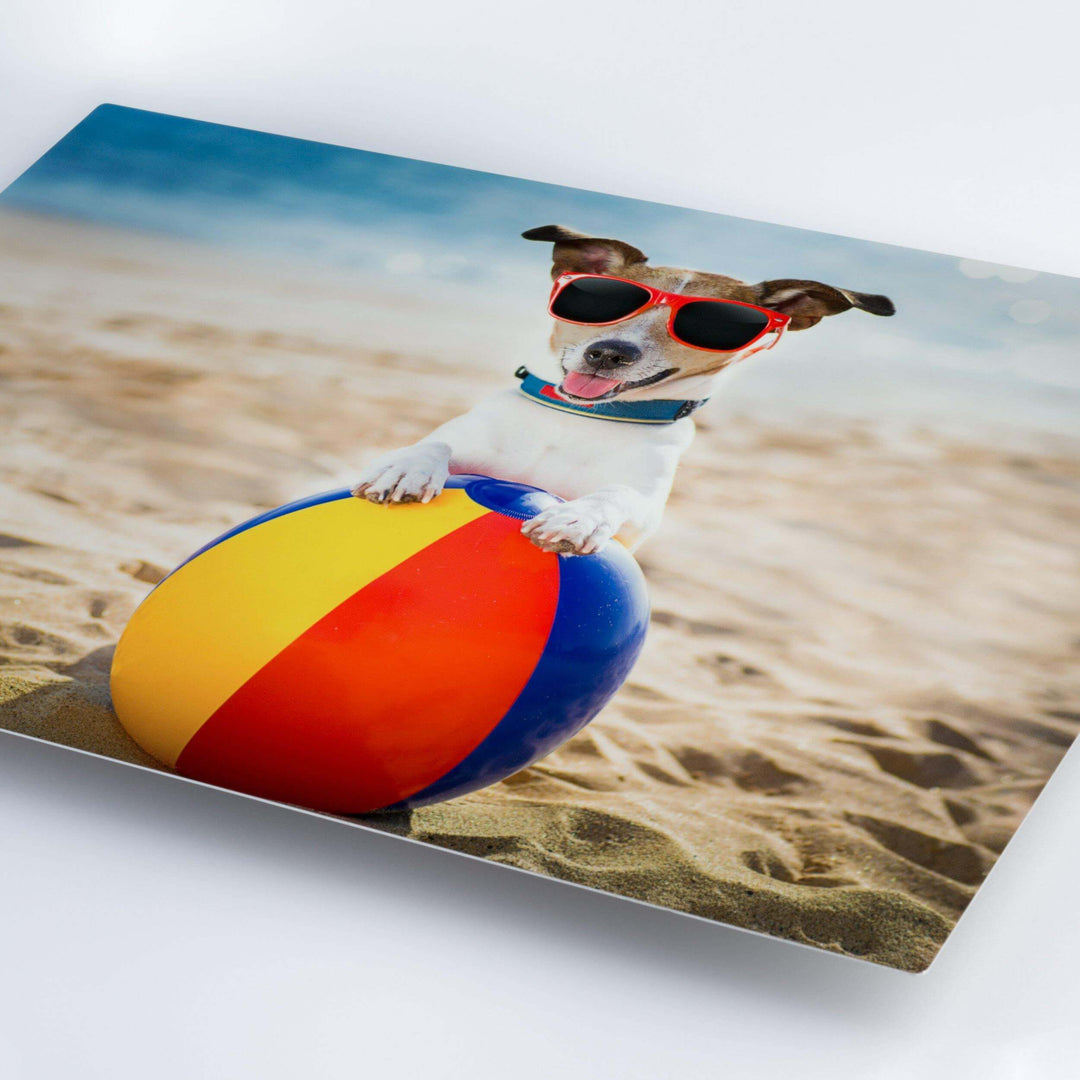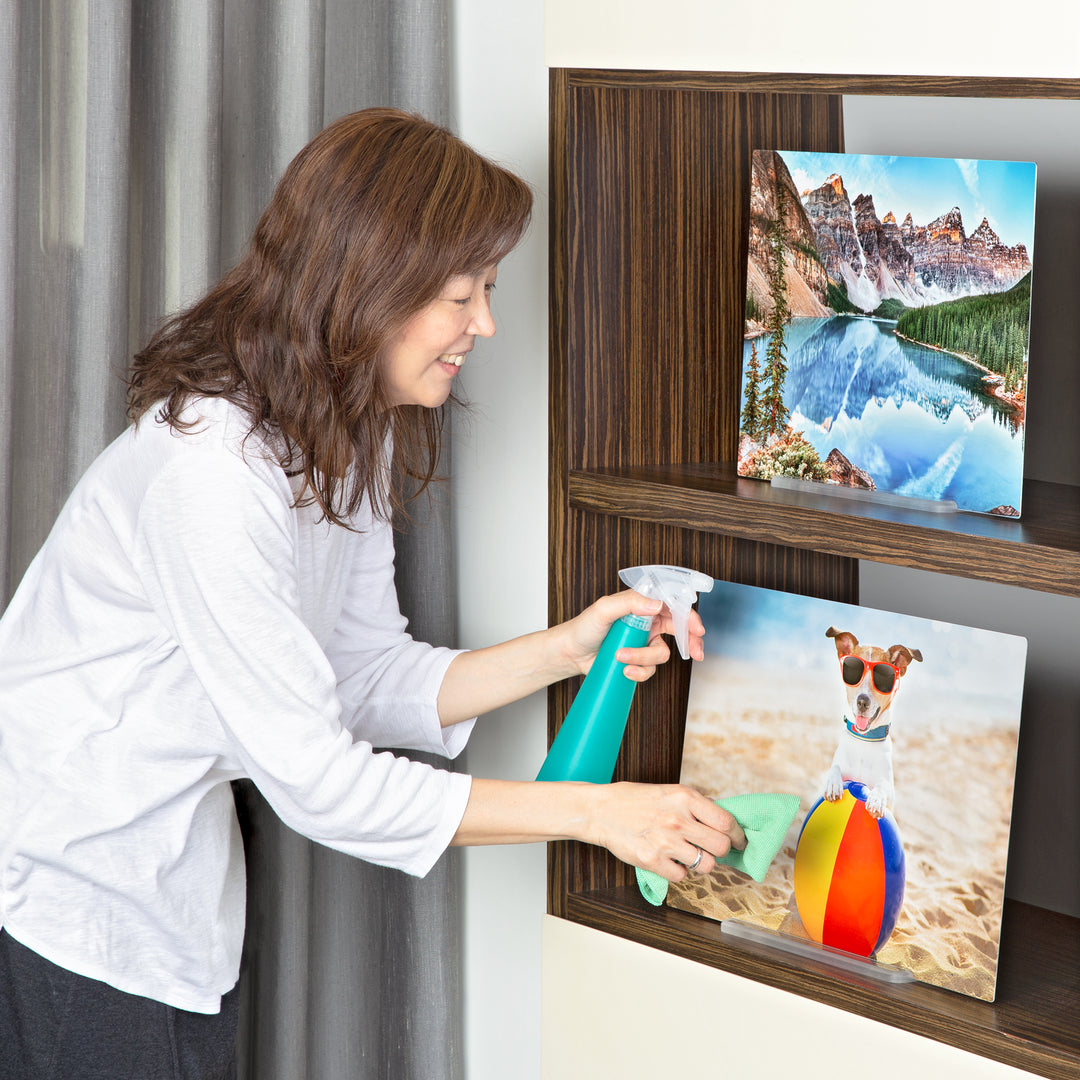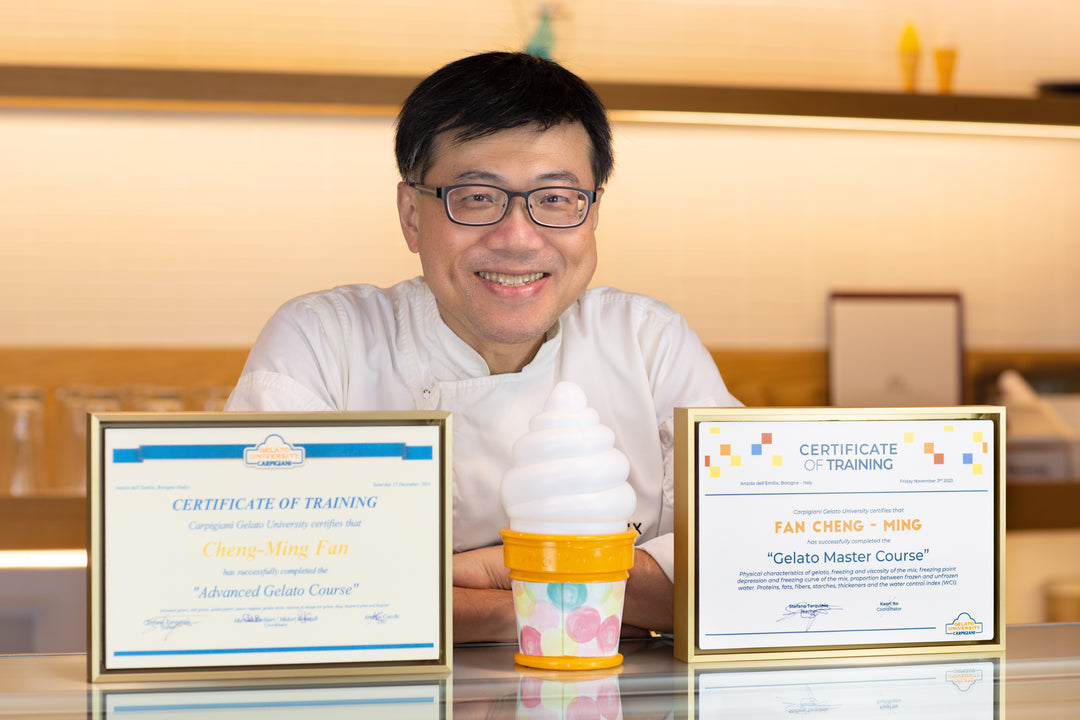Article updated on January 5, 2025
(Taiwan temperature and humidity statistics have been updated as of January 17, 2021)
With the increasing sophistication of digital photography and printing technology, our cherished memories, creations, and records are increasingly being presented in the form of digital output. However, Taiwan's hot and humid climate presents significant challenges in preserving these works. Whether using giclee, laser output, or thermal sublimation printing, each method has its own unique material properties and preservation requirements. Improper storage can lead to degradation such as yellowing, ink bleeding, and even mold.
This article will provide an in-depth introduction to common digital output technologies, the causes and patterns of various degradation phenomena, and provide practical storage recommendations based on Taiwan's climate conditions. Whether you are an artist, photographer, or someone who hopes to preserve family images for a long time, this article will help you understand:
- Is your environment suitable for preserving digital output? If not, how can you improve it?
- Gain a deeper understanding of the science of digital image preservation and find the most suitable method for preserving your precious works.
What is digital output/printing?
1. Define digital output/digital printing
Digital output is a broad concept encompassing methods of printing directly from digital files onto various substrates. Specifically, digital output refers to the process of converting digitally processed images and data into physical forms through various output devices, such as printers. This allows digital images to be presented as physical photographs, posters, canvases, and more.
Digital printing generally refers to professional printing. Compared to traditional printing, its primary advantage is the lack of platemaking, saving time and costs. It's suitable for relatively small print runs. Printers range from large, high-volume laser or inkjet printers to smaller, office desktop models. Consequently, digital output has a wide range of applications, which are briefly introduced below.
2. Development and application of digital output/digital printing
The development of digital output dates back to the mid-20th century. With the advancement of computer technology, digital image processing techniques have gradually matured. Early digital output devices were expensive and rare, but with technological advancements, their prices have gradually decreased, and output quality has continued to improve. Since the 2000s, further developments in hardware have led to the transition to digitalization for most image processing. Today, digital output technology is widely used in various fields and has become one of the most versatile and cost-effective output methods.
Digital output has long been widely used in our work and life, including:
- Everyday Printing: Low-Cost Home and Office Printing
- Office stationery: including business cards and letter paper
- Customized printing: photo books or small quantities of customized books
- Art Creation: Giclee and Photo Paper Printing
- Advertising production: large-scale outdoor advertising and event signs
- Photo output: digital photo output and printing
- Architectural design: wall hangings and floor patterns
Reference: Wiki Digital Image Processing
As a professional digital image output and printing manufacturer, we continuously research and organize information related to high-end digital image output. Therefore, this article will discuss digital image and photo paper output related to the aforementioned "artistic creation" and "photo output."

Types of digital image output
There are three main ways to output digital images:
1. Inkjet Prints
Inkjet printing uses nozzles to deposit ink onto paper or other substrates. The printer's printheads don't directly touch the paper; instead, they deposit ink through air. Therefore, the size of the ink dots, the distance between the printhead and the paper, and the precision with which the dots are deposited affect the final quality of the inkjet output.
How inkjet output works:
- Computer control : The computer breaks down the digital image into millions of tiny dots and accurately calculates the ink color and position required for each dot.
- Inkjet head : The printer's nozzle sprays tiny drops of ink onto the material. The size, quantity, and position of the ink droplets are controlled by a computer.
- Various materials : inkjet output can be used for various materials such as paper, plastic, cloth, etc.
This technology is currently widely used in professional printing equipment. If you are interested in learning more about digital output printing, please explore the following topics:
Types of inkjet output printing
Inkjet output printing can be divided into two types -
A. Continuous Inkjet
Originally used for image printing, it continuously ejects charged ink, using a computer system to control which droplets are printed on paper, while the rest are recycled. This technology was once primarily used for commercial printing, but is now less used for small quantities of customized image output and is now shifting towards mass production to compete with lithographic printing.
B., Drop-on-Demand Inkjet
Ink droplets are ejected only when needed, without the need for deflection or recovery systems. This technology is divided into two types:
- Thermal Inkjet : uses a heating element to vaporize ink to form bubbles and push ink droplets out of the nozzle
- Piezo Inkjet : uses ceramic piezoelectric sheets to bend and squeeze ink, pushing ink droplets out of the nozzle
Types of ink used for inkjet output
There are three main types of inks for inkjet printing: aqueous, solvent, and UV-curable.
High-quality digital image output usually uses water-based inks. Solvent-based and UV inks are only used in the production of large commercial graphics and large-scale posters and billboards. Therefore, we will not discuss or explain them in detail here.
Aqueous inks are divided into two types: dyes and pigments:
Dye ink
- Dyes are water-soluble organic compounds
- Dye technology continues to advance, and the lifespan of many dyes is significantly longer than in the past.
- Some dye inkjet printers use black pigment ink in an attempt to increase the durability of documents.
Pigment ink
- It may be inorganic, organic, or a mixture of both.
- Pigment inks are more resistant to the environment but are more easily damaged during handling
Giclee technology is a high-quality digital inkjet printout of images . We've already written an entire article exploring the topic, so we won't go into detail here. If you're interested in learning more about giclee printing , please check out the following article.
Read the article "A Comprehensive Analysis of Art Giclee"


2. Laser Printing
- Laser output printing is based on electrostatic photography, which was first invented by Chester Carlson in 1938.
- Digitalization began in 1969 when Xerox created the first laser printer using a computer-driven laser to expose the photosensitive drum of a photocopier.
- IBM was the first to commercialize the laser printer in 1976
How laser output printing works :
- Laser printing uses toner to form an image and heat to fuse the toner to the substrate.
- Digital laser printers use similar technology to analog photocopiers, the main difference being the way the photosensitive drum is exposed. Laser printers use a computer-controlled laser to scan the photosensitive drum, while photocopiers use light reflected from the drum to create a visible light.
- Color laser printers use four toners: cyan, magenta, yellow, and black , which are transferred separately to produce full-color images.
If you are interested in learning more about laser output printing, please explore the following topics:
Laser Printing Materials and Paper Specifications
Materials <br>Laser printing uses toner to form images. Toner comes in two main forms: dry and liquid:
- Dry Toner : Made of pigments encapsulated in polymer particles, it is fused to the paper surface through heating.
- Liquid Toner : Pigment is dispersed in volatile oil, which evaporates during the fusion process
Toner stability
- Black toner : High stability
- Color toner : Stability varies by manufacturer
Paper <br>Paper used for laser printing can be divided into two types: uncoated paper and coated paper:
- Uncoated Paper : Generally used for desktop or office printers, commonly called plain paper, office paper or copy paper
- Coated Paper : Coated with a mineral layer on the surface to increase the density, opacity and surface smoothness of the paper. Coated paper is commonly found in magazines, brochures, posters, etc.
In summary, image-related laser printing technology has also been applied to large-scale digital printing machines. These devices can perform single-sheet or mass printing, and each printed product can be unique, that is, single-sheet customized printing is possible, and no specific quantity is required for printing.
This makes laser printing competitive in customized products such as photos and personal albums.
3. Dye Sublimation Prints
Dye-sublimation printing is a digital printing technology that uses heat to transfer dye from a ribbon to the printing paper. This printing technology dates back to 1957, but it wasn't until 1986 that dye-sublimation technology truly entered the commercial market and began to be widely used for image output.
How sublimation output works:
- Pigment transfer : In thermal sublimation printing, the printer uses a ribbon coated with solid dyes, usually cyan, magenta, and yellow.
- Thermal Control : The printer transfers these dyes from the ribbon to the special paper surface by heating. The temperature and duration of heating affect the concentration of the pigment, allowing each color to be accurately superimposed to present a complete and colorful image.
- Receiving layer : The surface of the sublimation paper has a polyester coating, which can effectively absorb the vaporized dye from the ribbon
- Protective coating : After printing is completed, a layer of transparent protective coating will be added to prevent damage caused by moisture and air pollution
Current Status of Photo Printing/Export in Taiwan
In order to help everyone better understand the classification of photos in their hands or at home, and thus master the best preservation methods, we conducted some research on the current status of photo printing in Taiwan.
1. Photo studio/traditional photo studio: traditional photos
Most photo labs, whether in-store or online, don't list the models they use, so getting direct information isn't always easy.
However, we infer that most quick-printing shops and traditional photo studios in Taiwan still use traditional photo production technology to develop photos, such as 4x6, 5x7, 8x10 inches, that is, traditional printing technology that uses chemical agents for development and fixing.
We infer this because most photo labs use the following papers, which are suitable for traditional photo printing techniques:
Traditional photo printing
- Kodak Professional Endura Premier Paper
- Kodak Royal Digital Paper
- Fujicolor Crystal Archive Paper Type II
Therefore, we use photo paper to infer and understand the photo printing methods of these photo printing shops and photo studios!
2. Convenience store instant printing: Laser photos
As for the instant photo printing services provided by convenience stores, the following are the most convenient services:
- 7-11: ibon self-service machine
- FamilyMart: FamiPort self-service kiosk
The official websites of these two companies do not clearly state the printing technology used, so we cannot be sure. However, generally speaking, commercial self-service printing devices mostly use laser printing technology because it is faster and suitable for large-scale printing needs. Therefore, we infer that they may use laser printing technology, which is provided for your reference!
3. Professional digital output: inkjet output
The art micro-spray used by photographers, artists, and graphic creators are all inkjet output.
Inkjet printing encompasses a variety of different output methods, with giclee printing being a high-quality digital inkjet printing method . We've dedicated an article to exploring giclee printing, and if you're interested in learning more about giclee printing , please refer to the following articles.
Read the article "A Comprehensive Analysis of Art Giclee"
Degradation of digital photos
Regardless of the type of photo, over time, they will experience varying degrees of degradation due to environmental factors such as temperature, humidity, and air pollutants. These degradations include the following:
- Yellowing: The yellowing of paper or images over time
- Cracking: Cracks or breaks appear on the surface of a material
- Delamination: Separation of different layers of material
- Bleed: Ink spreads from the intended area, causing blurred edges.
- Blocking: Prints or images stick together in high temperature or high humidity environments
- Ferrotyping: The printed surface becomes shiny or has glossy spots.
- Mold: mold grows on the surface of the material due to moisture
- Fading: The color becomes lighter or disappears over time
We will explain the degradation examples provided by IPI Imaging Research Institute one by one.
1. Yellowing, cracking, fading
Here are the original photos for comparison...
- Yellowing : Paper or images turn yellow over time, affecting their appearance and texture.
- Cracking : Small cracks or breaks appear on the surface of the material
- Fading : The color gradually becomes lighter and loses its original color vividness


Photo link

Photo link

Photo link
2. Delamination and brightness degradation
The degradation examples we will explain next are also provided by the IPI Imaging Research Institute, which also allows us to more clearly understand the degradation caused by different situations.
The original photo vs the damaged photo is more obvious when compared...
- Delamination : Separation of different layers of paper or material
- Ferrotyping : The image surface becomes unevenly bright, or glossy spots appear.


Photo link

Photo link

Photo link
3. Ink seepage, sticking, and mold
The degradation examples listed below are still provided by the IPI Imaging Institute, and I believe they will help us better understand different types of degradation scenarios.
Here are the original photos for comparison...

Here are some examples of ink bleed, but the last two examples of photo deterioration, such as two sheets of paper sticking together or mold on the surface of paper, are common in our daily lives and are easy to imagine and understand. Therefore, we will not include reference photos:
- Bleed : Ink spreads into areas where it shouldn't be colored, causing blurred edges.
- Blocking : Prints or photos stick together in high temperature or high humidity environments
- Mold : Mold grows on the surface of materials in a humid environment

Image Link

Image Link
The impact of temperature and humidity on photo preservation
1. Temperature and humidity can cause different types of damage
After reading the above article, we have clearly understood that the following damages will be caused by the temperature, humidity, and air pollution in the environment:
- Yellowing: The yellowing of paper or images over time
- Cracking: Cracks or breaks appear on the surface of a material
- Delamination: Separation of different layers of material
- Bleed: Ink spreads from the intended area, causing blurred edges.
- Blocking: Prints or images stick together in high temperature or high humidity environments
- Ferrotyping: The printed surface becomes shiny or has glossy spots.
- Mold: mold grows on the surface of the material due to moisture
- Fading: The color becomes lighter or disappears over time
If we study further, different environmental factors such as temperature, humidity and air pollution actually cause different damage to photos!
| temperature |
|
air pollution
|
|
Cracking Delamination |
Bleed Sticky Blocking Brightness Deterioration Ferrotyping Mold |
Yellowing Cracking Delamination Bleed |
Research shows that temperature and humidity are two key factors affecting the lifespan of digital output. Drastic fluctuations in temperature or humidity can accelerate image degradation and even cause avoidable damage.
It's important to note that different combinations of materials, inks, and printing equipment can affect the preservation of printed works. For example, the same image can have vastly different results if printed on different brands of photographic paper, different types of paper, or even different inks and printing machines. Therefore, it's recommended to regularly check the preservation of each work, rather than using the same criteria for all printed works.

2. The impact of different temperatures on the preservation of digitally exported photos
Whether it is traditional photos or digital output photos, the ideal storage humidity should be maintained between 30% and 55% relative humidity . This range helps reduce material deterioration and prevent mold growth, while also maintaining image color stability.
Within this recommended humidity range, the durability of different types of photographs stored at different temperatures will vary. The following describes and evaluates the impact of various temperature environments on the preservation quality of traditional photographs and digital outputs.
| Storage conditions |
|
Traditional black and white photos | Traditional photo color | Digital image inkjet output | Digital image thermal sublimation output | Digital image laser output |
| Indoor temperature | 20°C | Fair | not good | not good | good | good |
| cool temperature | 12°C | good | not good | Fair | very good | very good |
| Refrigeration temperature | 4°C | very good | good | good | very good | very good |
| Subzero temperatures | < 0°C | very good | very good | very good | very good | very good |
The above-mentioned preservation quality assessment levels represent the following meanings:
| Quality Rating | Status Assessment |
|
not good
|
Potentially cause significant damage
|
| Fair | Not recommended, but may be suitable in the long term |
|
good
|
Meets minimum recommendations
|
| very good | Exceeding minimum recommendations |
Further explanation about the different temperature levels:
- Although we classify the storage environment into four temperature categories, the effect of temperature on the deterioration rate of paper photos is actually continuous - the higher the temperature, the faster the aging process; the lower the temperature, the slower the aging process.
- In practice, the average temperature of the storage environment is categorized into the nearest temperature category. For example, if the actual storage temperature is 10°C, the environment is considered to be in the cool category (12°C).
- If the actual temperature falls between two temperature ranges, both the effects of the cooler temperature and the risks of the warmer temperature should be considered for a more comprehensive preservation assessment.
- In addition, any environment with an average temperature equal to or below 0°C should be considered a sub-zero storage environment. Such conditions can usually significantly slow down the rate of image degradation.
Overall, cryopreservation is an effective method that can significantly slow down the aging process and preserve paper photos for longer.
In short, understanding the materials and storage conditions used for your digitally output photos, and checking and adjusting environmental factors in a timely manner, is the best way to ensure the long-term preservation of photos.

3. Impact of extreme humidity on digital inkjet output
Humidity has a great impact on the preservation of digital output photos. Too high or too low humidity should be avoided to ensure the quality and life of the photos.
Effects of high humidity
- High humidity environment can easily cause material agglomeration, surface brightness degradation, and even mold.
- Dye inks used in inkjet printing are prone to ink bleeding in high humidity environments, causing image blur and color fringing.
- According to observations, at 25°C and relative humidity below 65%, digital inkjet photos are safe and will not bleed.
- However, when the humidity exceeds 65%, the bleeding of digital inkjet photos begins to become obvious, and as the humidity increases, the bleeding time is shortened sharply.
- At relative humidity levels of 80% or higher, digital inkjet photos may experience severe ink bleed and image degradation in less than 24 hours.
Therefore, digital inkjet photos should be avoided from being stored in high humidity environments, especially those above 80%.

Effects of low humidity
- Although Taiwan rarely experiences extreme low humidity environments, materials tend to become brittle when relative humidity falls below 25%, leading to cracking and difficulty in operation.
Recommended humidity range
- The relative humidity of the storage environment should be maintained between 25% and 65%, with an ideal range of 30% to 55%.
In summary, maintaining an appropriate humidity range and avoiding extreme high or low humidity environments are key to ensuring the long-term stability of digital inkjet output.
Research results: Ideal preservation conditions for photographs
IPI Research recommends the following storage conditions for various types of photographs, including traditional and digital prints:
| Image output type | Maximum temperature | Relative humidity (RH) range |
| Sublimation output | 20°C (68°F) | 30-50% |
| Laser output | 20°C (68°F) | 30-50% |
| Inkjet output (dye and pigment ink) | 4°C (40°F) | 30-50% |
| Color traditional photos | 4°C (40°F) | 30-50% |
| Black and white traditional photos | 12°C (54°F) | 30-50% |
It is worth noting that both traditional and digitally output photos should be stored in an environment with a relative humidity of 30 to 50% and the indoor temperature should not exceed 20°C.
Preservation Challenges: Taiwan's Climate Characteristics and the Preservation of Digitally Output Photographs
In this short segment, we will discuss the challenges of preserving photos in Taiwan!
First, we found the official statistics on Taiwan’s climate over the past 30 years (1991-2020):
Central Meteorological Bureau meteorological statistics,1991-2020, 30-year average temperature and relative humidity (updated every 10 years, the next update date is the end of January 2031)
| 1991 - 2020 | Average temperature | Number of days per year with temperature ≥ 25℃ | Number of days with maximum temperature ≥ 30℃ per year | relative humidity |
| Taipei | 23.5°C | 151.1 days | 135.7 days | 74.8% |
| Hualien | 23.7°C | 160.0 days | 123.5 days | 77.3% |
| Yilan | 22.8°C | 145.3 days | 122.4 days | 80.7% |
| Kaohsiung | 25.4°C | 223.8 days | 173.7 days | 75.0% |
| Taichung | 23.7°C | 179.6 days | 170.9 days | 74.5% |


Based on the above research, we draw the following conclusions:
- Whether it is traditional or digital output, the indoor temperature should not exceed 20°C
- Inkjet output and traditional color photos even need to be stored in a refrigerated environment (about 4°C) to reduce damage to the work.
- Whether it is traditional or digital output photos, the relative humidity should be maintained between 30-50% to ensure the stable preservation of the works.
Based on Taiwan's climate statistics, we can draw the following conclusions:
- Taiwan's climate is not conducive to the long-term preservation of paper photos, regardless of the output format, and is particularly unfavorable for inkjet output and traditional color photos.
- To create an environment suitable for preserving video works in Taiwan, it is necessary to rely on air conditioning systems to strictly control temperature and humidity for a long time. This usually requires equipment and management at the level of art galleries, museums or archives to achieve.
In Taiwan's hot, humid and changeable climate, have you ever wondered:
- Can the space where I currently store my video works really withstand the damage caused by high humidity, temperature differences and air pollution?
- If the existing environmental conditions are not ideal, is there a more stable and safe way to preserve the work so that it can remain fresh over time?
Recommendations and suggestions: Ideal preservation conditions and recommendations in Taiwan
Taiwan's humid and changeable climate presents significant challenges in preserving digitally generated works. Effectively controlling temperature , humidity , and air quality can significantly reduce the rate of deterioration and extend the lifespan of your work. The following are preservation recommendations tailored specifically for Taiwan's environment:
1. Summary and Recommendations
- In Taiwan, ideal storage conditions are: a stable temperature of 18°C to 21°C , a relative humidity of 30% to 50% , good air circulation and avoid direct sunlight.
- If conditions permit, it is recommended to use constant temperature and humidity equipment to maintain a stable storage environment
- Regularly check the storage environment and adjust equipment settings according to seasonal changes to ensure that paper photos can maintain optimal condition for a long time.
Under Taiwan's climatic conditions, a good preservation environment is not easy to achieve, but as long as each key factor is carefully controlled, paper photos can still remain vivid and complete over time.
Here are our detailed instructions!
2. Temperature control
- Ideal temperature : Maintain between 18°C and 21°C
- Stability : Avoid drastic temperature changes, as frequent temperature changes can cause the paper to shrink or expand , and in severe cases even cause surface cracks.
- Practical Tip : Use an air conditioning system to maintain a stable indoor temperature, and avoid placing artwork near cooling or heating vents.


3. Humidity control
- Ideal humidity : Relative humidity (RH) should be maintained between 30% and 50%
- High humidity risk : Excessive humidity can cause paper deformation , ink smearing , and even mold.
- Low humidity risk : Low humidity can make paper brittle and even cause static electricity problems
- Practical advice : Use a dehumidifier to control humidity, especially important during the rainy season and in humid island climates.
4. Air quality
- Pollutants and dust in the air may accelerate material aging and even cause mold growth
- Practical advice : Maintain indoor air circulation and use air purifiers to filter out suspended particles and pollutants
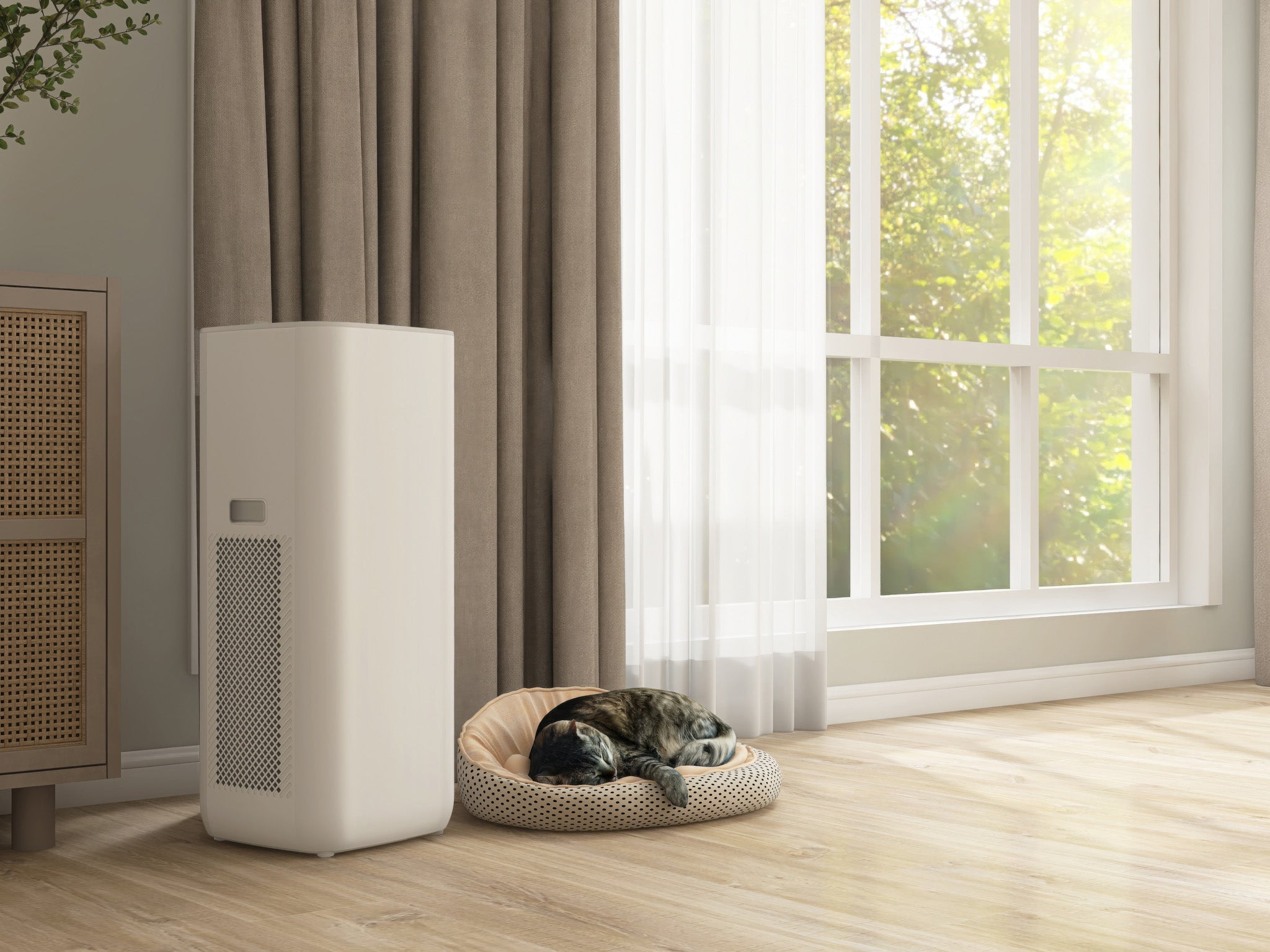

5. Avoid direct sunlight
- Ultraviolet rays are one of the main reasons for color fading . If exposed to sunlight or strong light for a long time, the image color will fade quickly.
- Practical advice : Place the artwork in a cool place, or use UV-resistant transparent glass or acrylic to provide additional protection.
6. New Proposal: ChromaLuxe Metal Photo
If you read the above, you may feel frustrated because:
- Ideal storage conditions are difficult to achieve <br>Maintaining stable temperature, humidity and light control is not easy in daily life and often requires specific equipment and environment
- Storage conditions are at odds with the living environment .<br>The comfortable temperature and humidity we need in our daily lives are often inconsistent with the ideal photo storage environment, making it difficult to strike a balance.
- Despite best efforts, photographs may deteriorate . Even with extensive environmental control efforts, paper photographs may yellow, crack, or fade over time.
Then, we welcome you to explore the new photo medium "metal photos", because we believe that metal photos are a good solution!
- Bright colors, fine texture and excellent durability
- Can be easily integrated into the home or office space without excessive maintenance
- Become a permanent visual focus in the living space
We have compiled a brief comparison table of the "characteristics" of the two printing media: digital output and Vision Image's "Metallic Photos". Welcome to learn more about ChromaLuxe Metallic Photos.
Notes
1. Further reading: Introduction to the IPI (Image Permanence Institute)
The IPI (Imaging Institute) is a nonprofit university-based research laboratory dedicated to scientific research on the preservation of visual and other documentary forms. It is the world's largest independent laboratory dedicated to this topic. Founded in 1985, IPI is a joint effort and sponsorship of the Rochester Institute of Technology (RIT) and the Society for Imaging Science and Technology.
IPI's preservation research and outreach efforts are funded primarily by the National Endowment for the Humanities, the Institute of Museum and Library Services, and the Andrew W. Mellon Foundation, as well as generous contributions from corporate supporters. IPI provides information, consulting services, practical tools, and preservation techniques to libraries, archives, and museums worldwide. The imaging and consumer protection industries also utilize IPI's consulting, testing, and educational services.
- Areas of research and expertise: Photographic output and the properties of printed media
- Provide professional information and technical support for the preservation of archival and photographic outputs
- Sustainable practices in environmental management and preservation
- Image and information media, as well as the stability of digital output storage
- Developing ISO standards for imaging media and preservation
For more information about the IPI Institute of Imaging, please refer to the IPI Wiki or the IPI official website.
Website Links: IPI Wiki | IPI Official Website
2. References and recommended links
Q13: What are the temperature and humidity requirements for archive warehouses?
Article link: https://www.archives.gov.tw/wSite/public/Attachment/0/f1715584304365.pdf
IPI's Guide to: Preservation of Digitally-Printed Images
Article link: https://s3.cad.rit.edu/ipi-assets/publications/dp3_guide.pdf
IPI Guide to Preservation of Digitally-Printed Photographs
Article link: http://www.dp3project.org/webfm_send/739
Inkjet
Article link: http://dp3project.org/technologies/digital-printing/inkjet
Storage Recommendations
Article link: http://dp3project.org/preservation/storage-recommendations


